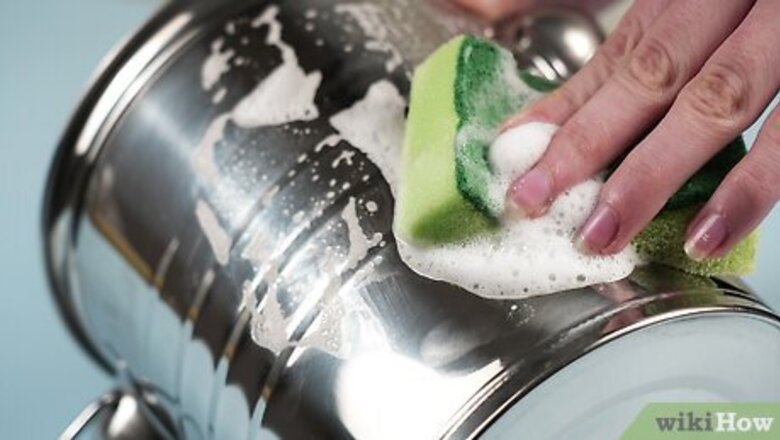
views
Preparing the Project
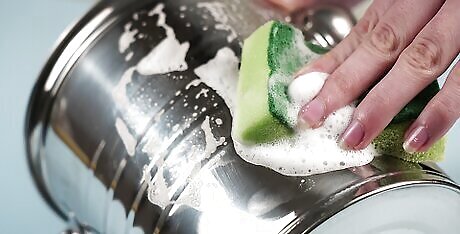
Clean bare aluminum with warm water and a degreasing agent. Fill a tub or bucket with warm water, then add a few squirts of a degreasing cleaner. Dip a rag into the solution, then use it to wipe down the aluminum. Rinse the aluminum with plain water afterwards to remove any residue, then dry it off with a clean cloth Buy degreasers at home improvement stores. Dish soap is another great option. Skip this step if you wish to remove any old paint. The chemicals used in the process will help clean the metal.

Remove old paint with a paint stripper. Follow the instructions that came with the paint stripper as each brand could be different. In most cases, you'll pour the solution onto the metal, wait a few minutes, then scrape it off with a paint scraper. Use an "after wash" to remove any paint stripper residue. You can find it alongside the paint strippers in home improvement stores. Rinse the surface off with plain water afterwards, then dry it with a clean cloth.
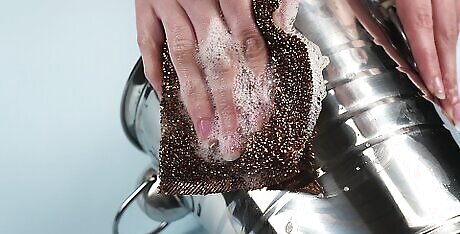
Scrape rust away with warm water, degreaser, and a wire brush. Get the metal wet with a solution made from warm water and a few pumps of degreaser. Scrub the rusted spots with a wire brush, then rinse the surface with plain water. Dry the surface with a clean cloth afterwards. Alternatively, you can use a special product made for removing rust; check your local home improvement store. Don't leave any rust behind, as it will prevent the paint from adhering properly.

Put on safety goggles, work gloves, and a dust mask. This is very important. The sanding process will send lots of tiny dust particles into the air. Metal sanding dust is definitely something that you don't want to breathe in. Not all dust masks are created equal. When purchasing your dust mask, make sure that it is rated for sanding dust.
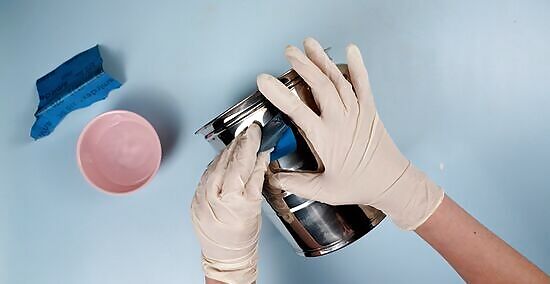
Sand the metal with coarse-grit and with fine-grit sandpaper. Buff the entire surface using smooth, circular motions and 80- or 120-grit sandpaper. Wipe the dust off with a tack cloth, then buff it again with 400-grit sandpaper. You can use a higher grit than 400 on the second pass. If the 80- or 100- grit sandpaper created deep gouges, follow-up with 200- and 300- grit sandpaper before moving on to 400-grit. Sanding the metal will help give the primer something to stick to.

Rinse the surface again with warm water and degreaser. Fill your tub or bucket again with warm water, then add a few pumps of a degreasing cleaner. Rinse the metal off with this solution, then rinse it again using plain water. Allow the metal to air-dry before moving on. This is important because it will remove any sanding dust, which can create imperfections in the paint. Alternatively, you can wipe the metal down with a tack cloth.
Priming the Surface
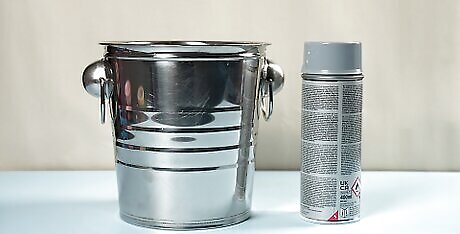
Purchase a can of self-etching paint primer. Do not use regular paint primer, even if it is labeled "for metal." It is not the same thing. Purchase a can of "self-etching primer" from a home improvement store or an auto specialty store, and use that instead. You can also use an oxidizing primer—this is specifically designed for metal and helps inhibit the growth of rust in the future.Plan ahead by reading the can for the ideal painting conditions. Most cans will specify the ideal temperature range that you should be working in.
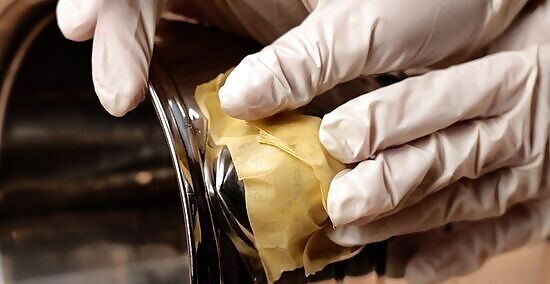
Cover any areas that you don't want painted with masking tape. If you need to mask off a large area, cover it with paper or plastic sheeting first, then secure the edges with masking tape. You will remove the masking tape and paper after the paint and/or sealer has dried.
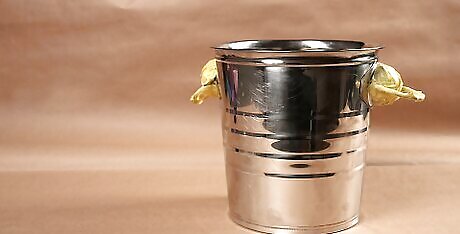
Find a well-ventilated area to work in. While you can brush paint onto aluminum, you have to spray the primer on. The aerosol cans that paints and primers come in release fumes, which can cause headaches and lightheadedness. Outside would be the best option, but if you can't work there, choose a large room with good ventilation and open windows. A respirator mask is a must. Do not paint if it is raining or humid outside, as this can affect the curing process.
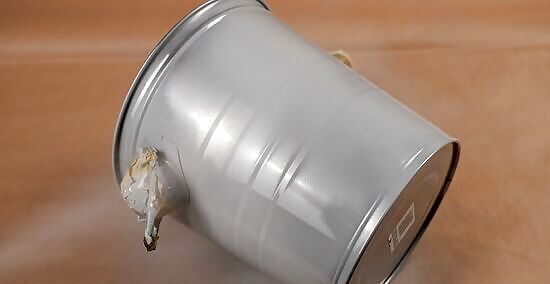
Spray an even coat of self-etching primer onto the aluminum. Shake the can for about 30 to 60 seconds first, then hold it about 8 inches (20 cm) from the surface. Spray on a light, even coat using overlapping strokes. You can spray side-to-side or up-and-down. Overlap each stroke ever so slightly to ensure that you are covering the surface evenly. If your can has a different set of application instructions, you should follow those instead. If you are working with a multi-sided object, let the first side dry to the touch before priming the other sides.
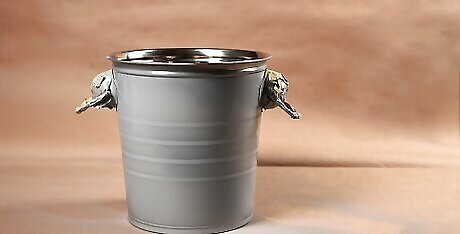
Let the primer dry for 15 minutes before adding a second coat. Check the can again to find out exactly how long you should wait before applying a second coat. Most primers will have a "between coats" drying time and a curing time. Refer to the "between coats" time for this. How long it takes for the primer to dry depends on the brand that you are using. In most cases, you'll have to wait between 5 and 15 minutes.
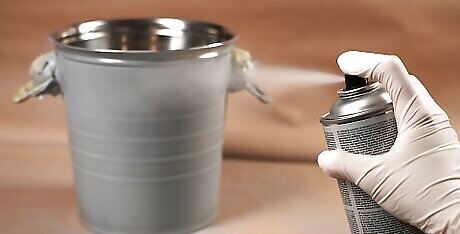
Add 2 to 3 more coats, then wait about 1 hour for the primer to cure. Again, check your can to find out exactly how many coats of primer you should use and how long you should wait for it to cure. In most cases, you'll need about 3 to 4 coats of primer and wait about 1 hour for it to cure. Be patient and let the primer cure. If you don't wait long enough, the paint and primer may peel. Double-check the instructions on the can for more specific curing times. Remember to apply light coats of primer. This will help it cure properly. If you slap on a thick coat, the primer may go tacky or just peel off.

Buff away imperfections with 400-grit sandpaper, if needed. Once the primer has cured, take a close look at it. If you like the finish, you are ready to move on. If it looks rough, pitted, or drippy, lightly buff the surface with 400-grit sandpaper. Be sure to wipe the surface clean with a tack cloth afterwards. Double-check the masking tape after this. If the edges look frayed, peel it off and lay down new strips.
Applying the Paint
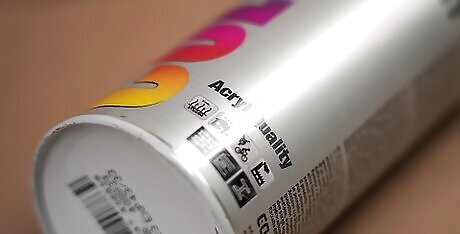
Buy acrylic or latex paint. For best results, choose paint with a matte or satin finish. While glossy paint will work, it is not recommended because it will show off any imperfections in the metal. Because you already applied the primer, you can use any type of paint you want. It does not have to be labeled "for metal." If the piece that you are painting will be kept outdoors, choose a paint that's labeled "exterior" or "outdoor." Spray paint will be the easiest to apply, but you can use brush-on paint too.
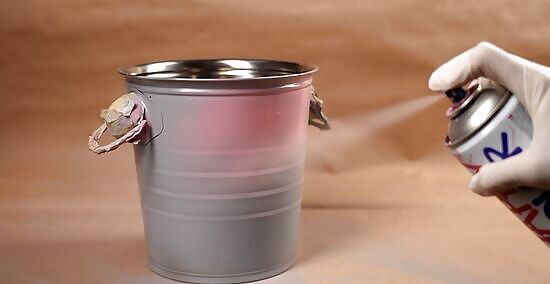
Brush or spray on a light, even coat of paint. This is important, regardless of the type of paint you are using: brush-on or spray-on. Just like with the primer, apply the paint using straight, overlapping strokes. They can be horizontal or vertical, but they all need to go in the same direction. If you are using brush-on paint, use a flat, wide paintbrush may from synthetic fibers. Avoid soft camel hair or stiff boar bristle. If you're using spray paint, shake the can for about 1 minute first, then hold it about 8 inches (20 cm) from the surface while spraying it. For a multi-sided object, start with the top and sides. Once the paint feels dry, move onto the bottom.

Wait about 15 minutes for the paint to dry to the touch. How long you wait for the paint to dry depends on what type of paint you are working with. In general, you'll only have to wait 5 to 15 minutes. You don't have to wait for this coat of paint to cure because you'll be adding more coats. Double-check the paint can to see how long you should wait for the paint to dry between coats.

Add up to 3 more coats of paint, allowing each one to dry for 15 minutes. Once the previous coat of paint feels dry, you can apply the next coat. Refer to the paint can to find out how many coats of paint you should, and how long you should wait between coats. You don't have to wait for the paint to cure between coats. In most cases, you'll need at least 2 coats of paint.
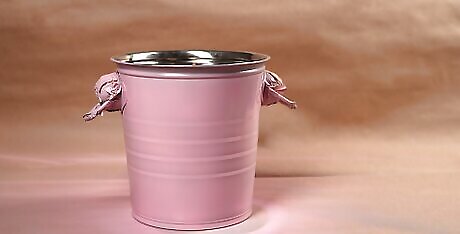
Let the paint dry and cure completely, about 24 to 72 hours. Again, how long this takes depends on the type of paint you are working with. If your can of paint has both a drying time and a curing time, you should follow the curing time. Drying and curing are too different things. This can take anywhere from 24 to 72 hours. Just because something feels dry to the touch does not mean that it's dry underneath. Once paint has cured, you can be sure that it's dry all the way through. If you want the unpainted metal to have the same finish as the painted metal, peel the masking tape off now.
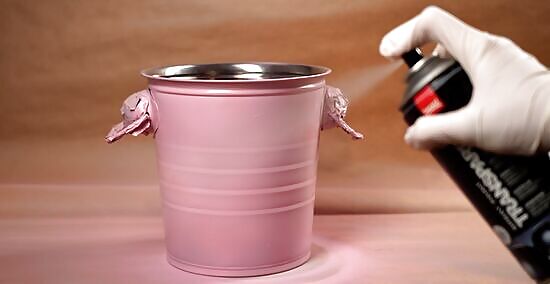
Apply 2 to 4 coats of clear enamel, letting each coat dry in between. Like with the paint, apply light coats consisting of overlapping strokes. Let each coat dry to the touch before applying the next coat. How long you have to wait depends on the type of enamel you are using. Spray enamel just like you applied spray-on primer and spray-on paint. Brush enamel on using a synthetic-bristle brush and straight, overlapping strokes. Enamel comes in different finishes: matte, satin, and glossy. Pick the one you like best, but be aware that glossy finishes will show imperfections more.
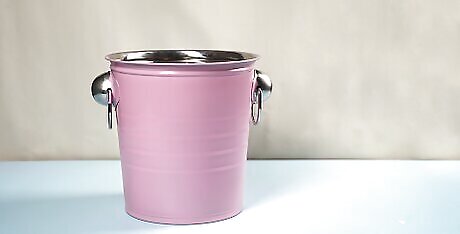
Let the enamel cure completely, about 24 to 72 hours. Since each brand of enamel is different, read the instructions on the can to find out how long you should wait. If you left the masking tape on previously, wait until the sealer dries and cures before peeling it off. Don't use the piece before the enamel has finished curing, or it may turn tacky.

















Comments
0 comment